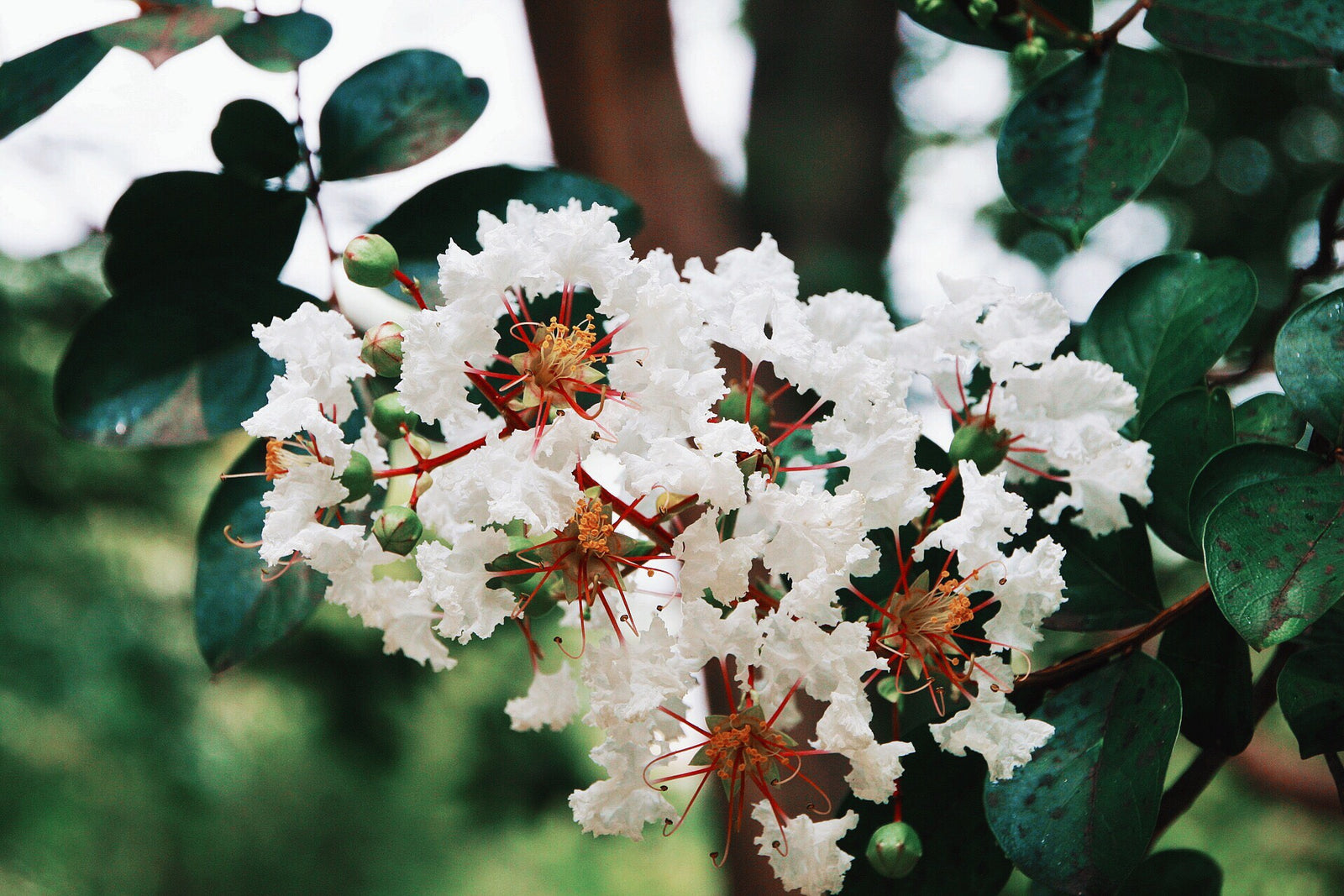Your Cart is Empty
Crape myrtles are one of the most popular choices of flowering trees for decorating residential homes and communities in many parts of the world, including the South in the US. They can easily reach a height of around 30 ft but are usually kept shorter with pruning in the winter or early spring.
During summer, these trees gift us with aesthetic delight: small, colorful flowers extended on 2-4 long clusters. Crape myrtles are not known to be particularly fickle when it comes to cultivation practices, nor do they require a lot of attention. However, they are commonly plagued by two antagonists -powdery mildew and aphids- that threaten proper flowering and general health of crape myrtles. While powdery mildew is relatively easy to control even retroactively after breakouts, crape myrtle aphids are notoriously troublesome and very difficult to eradicate.
The ideal location for a crape myrtle would be among other shrubs and trees that can provide natural protection against predators and diseases. Chances of getting aphid infections become higher if they find themselves in an environment without such plants in its vicinity. Crape myrtle aphids are tiny and pale yellow-green in color and are mostly spotted on the underside of leaves. Their eggs typically overwinter and hatch in the spring. These small creatures suck the sugary plant sap from the leaves and inject saliva into them while feeding- causing the leaves to look yellow. They also excrete honeydew (excess sugar and water from its body), attracting black sooty mold- causing a blackening of the leaves and potentially the entire plant.

Crape Myrtle Tree heavily infested with aphids
Various predators like ladybugs, green lacewings, hover fly maggots, and wasps feast on aphids. Unfortunately, however, these predators are often not enough to reverse a severe infestation. Likewise, existing chemical insecticides are largely ineffective against highly dense populations of crape myrtle aphids. This is because a single surviving aphid can produce and build up a colony in a short span of time due to its ability to asexually reproduce. This propagation can especially thrive when its predators are killed by the same application of insecticide meant to eradicate the “pests” i.e. the aphids, bringing the whole process to a vicious cycle and at a worse ecological balance than before. All things considered, if one does decide to go ahead with chemical applications, it is most effective to soil drench in the springtime with systemic pesticides that use imidacloprid as the active ingredient. Keep in mind, however, that these pesticides can and will harm beneficial insects including bees.

Wasp, a natural predator, preying on a crape myrtle aphid
If not chemicals, what solutions are left to choose from? Spraying water or insecticidal soap is the most safe and effective way of controlling crap myrtle aphids. However, this method requires faithful repetition. One-time treatment will not make a big difference, but periodical and repetitive water spraying combined with natural predator feeding can bring about effective results. After spraying water or insecticidal soap, leaves can often look weak or lifeless. If this is the case, a supplemental nutritional soil drench and/or spraying on the leaves is a good way to reinvigorate the trees sooner.

A reinvigorated crape myrtle tree with fresh shootings after Mikrobs application
Mikrobs not only contains soil microbes that operate as growth stimulants, but also has valuable nutrients such as amino acid, fulvic acid and kelp extract that show immediate effects when sprayed on leaves. Applying Mikrobs in soil drench and leaf spray in rotation will pump vigor and vivacity back into your crape myrtle.
Comments will be approved before showing up.
